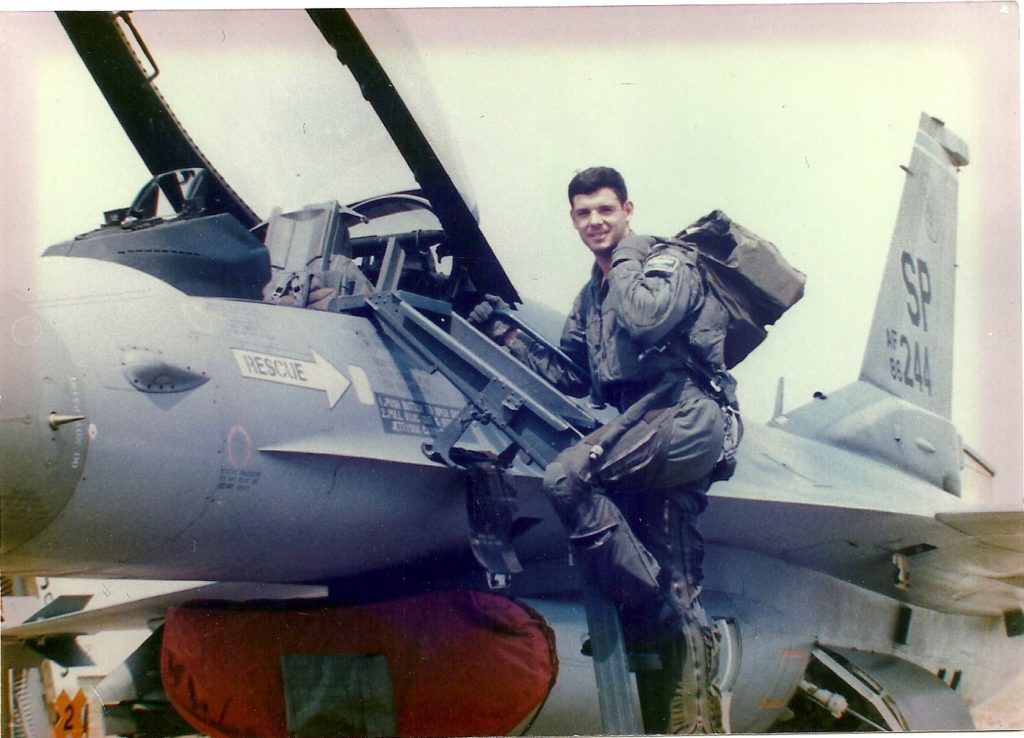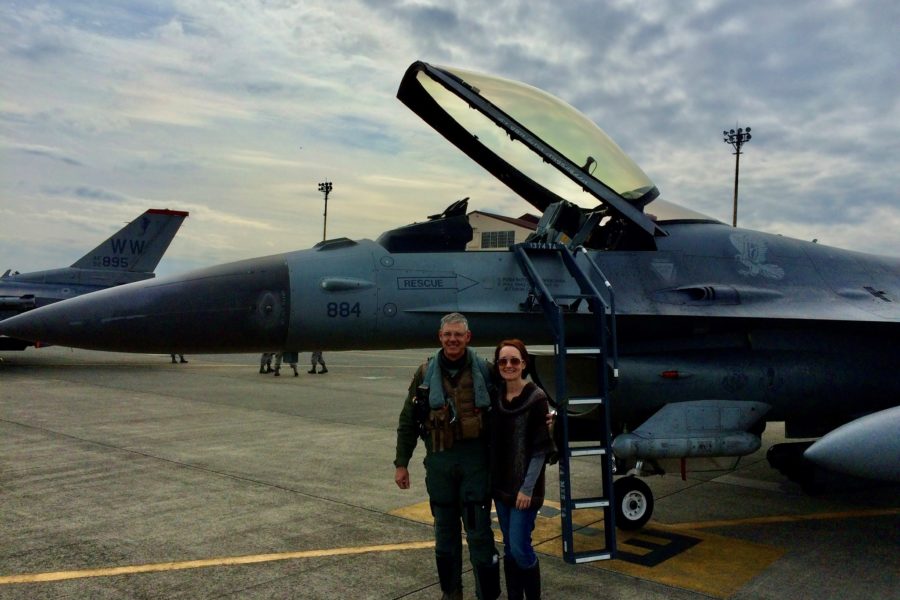Retired Lt. Gen. Sam Angelella caught the bug for high performance engines 40 years ago. It was his first time taxiing down the runway in a T-38. He lit the afterburners on the GE J85, heard the engine thunder, and said to himself, “OK—now I get it.”
That exhilaration in 1982 propelled Angelella through a 34-year Air Force career as an F-16 pilot, where he had a front-row seat as the F-16’s engine variants grew and developed under GE’s innovation. In fact, most of his 3,200 flying hours were spent on GE engines: He piloted Falcons fit with the Block 30 “Big Mouth” during Desert Storm in 1991; he served as an F-16 instructor at MacDill Air Force Base, Fla., in 1991 where GE was testing the improved performance F110-129; and he later flew F110-129 powered Block 50s as a squadron commander at Misawa Air Base, Japan, in 1997. At that time, Angelella considered the latter to be the acme of jet engine innovation.
“I thought, ‘This is it. We’re not going to be able to put anything else on [the F-16]. It’s maxed out,’” he said. “Of course, I was wrong. Each time I returned to the F-16, as a Wing Commander at Shaw AFB, and then later as the Wing Commander at Misawa, the F-16 Block 50 had more capability that required that increased power provided by the F-110-129.”

America’s air superiority relies on continuous improvement, and GE Aerospace has historically and reliably delivered both. It’s a lesson that’s as pertinent today as it was 40 years ago, especially in an increasingly strenuous era when near-peer competitors and adversaries are catching up to U.S. capabilities.
Given the growing threat environment, the Defense Department has shifted its focus over the last 10 years from improving the F-16 to improving the fifth-generation F-35 strike fighter, specifically through the Adaptive Engine Transition Program (AETP). One of the AETP offerings—GE Aerospace’s XA100—has been in development since 2016 as a replacement for the current F135 engine. After years of testing, the XA100 has exceeded the program’s original parameters set by the Air Force and offers a generational jump in mission capabilities.
In GE’s most recent trial under AETP, the XA100 exceeded the program requirements, delivering 30 percent better range, 25 percent better fuel efficiency, 20 percent greater acceleration, and twice the thermal management capabilities over the F135. Using cutting edge technology and materials, the XA100 can alleviate—even eradicate—the concern over durability, thus equipping the next generation of warfighters with an advantage over the adversaries on the horizon.
“The new material is a ceramic matrix composite,” said Angelella, who now consults for GE Aerospace after a six-year tenure as their vice president of military customer programs. “That really gives you increased durability. It gives you increased capability—an engine that you can run at temperatures that you can’t run in the current configuration. And so basically, the durability issue goes away. [Then the] power is increased and [you have] basically unlimited thermal capability for the weapon systems requirements on the airplane.”
Despite the evidence that the XA100 represents a vast generational leap in engine technology, leaping over the “valley of death”—from research and development to operational capability—remains a challenge. Some Pentagon officials and industry members remain skeptical, arguing that the XA100 has higher production costs, instead favoring “incremental upgrades” to the F135 as a more cost-effective alternative in the near-term. But Angelella argues that cost and time are two factors that only strengthen the case for moving forward with the XA100.
“Even if you spend the money for incremental capability right now, you still have this bill to pay later,” he said, referencing that the Pentagon has already spent $2 billion on AETP development. “Why not put that money in the program up front [and] get the full capability into the hands of the warfighter sooner?”
This fall, nearly 50 members of Congress from both sides of the aisle similarly urged the Pentagon to focus on improved technology in the face of increasing threats, in a letter calling for continued funding for AETP.
Generational improvements to combat propulsion performance have never been more pressing for the U.S. as it seeks to ensure continued air dominance in tempestuous theaters like the Indo-Pacific. The XA100 is the most advanced combat engine in the world, and if implemented it would power a strong future for the F-35, said Angelella.
Prior to deploying to Kuwait in 2002, Angelella said, he retrained in the F-16CG Blk 42 at Luke Air Force Base, Ariz. At that time, the increased weight and weapons growth in the aircraft had outpaced the engine power. That, combined with the high temperatures and pressure altitude at Luke, often required his students to take off with the radar and other systems turned off so they wouldn’t overheat. Again, he asked, why not add the revolutionary power to the F-35 now, ahead of the weapons growth?
“In this decisive decade, it’s important to create revolutionary change,” said Angelella, echoing prominent USAF leaders, including Air Force Secretary Frank Kendall’s operational imperatives and the Chief of Staff Gen. Charles Q. Brown Jr. who has repeatedly cautioned DOD leadership that, “Good enough today will fail tomorrow.”
Just as Angelella reflects on how GE’s family of engines shaped the legacy of the F-16, he predicts future warfighters will look back on the decision to fit the F-35 with the XA100 as a pivotal point in the U.S.’s continued air superiority through the 21st century, because if the performance bar isn’t drastically raised today, it won’t be high enough tomorrow.
“Think about the risk reduction that has been done by testing this engine over 10 years working with Air Force Research Lab (AFRL),” Angelella said. “We’re not starting from scratch here … [and] we’re not going to be done. This aircraft, with this engine in it, will continue to grow. We’re talking about being able to do the Block 4 capabilities. How about Block 4 and beyond? How about NGAD? What will that look like? What will future propulsion look like? We can’t just skip a generation. It’s time to get this into production—it’s time to take that generational leap.”

